МИНИСТЕРСТВО ЛЕСНОГО ХОЗЯЙСТВА
И ОХРАНЫ ОБЪЕКТОВ ЖИВОТНОГО МИРА НИЖЕГОРОДСКОЙ ОБЛАСТИ
Государственное бюджетное профессиональное
образовательное учреждение Нижегородской области
«КРАСНОБАКОВСКИЙ ЛЕСНОЙ КОЛЛЕДЖ»
(ГБПОУ НО «КБЛК»)
МЕТОДИЧЕСКИЕ УКАЗАНИЯ
по дисциплине «Иностранный язык (Английский язык)»
для студентов I курса
Тема 12 Страны изучаемого языка
Тема 13 Традиции России и англоговорящих стран
Составили:
преподаватели
иностранного языка
Воронина М.В.,
Булкина Т.А.
Красные Баки
2023 год
Lesson 1
Great Britain
№1. Which things belong to the United Kingdom: word - country?
Oxford University, Metropolitan Museum of Art, Big Ben, Eiffel Tower, five-o'clock tea, Brooklyn Bridge, Beefeater, Mickey Mouse, double-decker, Coca-Cola, cricket, Versailles, pudding, Stars and Stripes, Winnie-the-Pooh, Yale University, kilt, Disneyland, hamburger, Yellow Submarine, spaghetti.
№2. Match the left and right columns
| 1. Buckingham
2. Trafalgar
3. Hyde
4. Royal Botanic 5. Rolling
6. Doctor
7. British 8. National Portrait
9. Queen
10. Robert | a. Park b. Gallery c. Burns d. Airways e. Palace f. Victoria
g. Garden h. Watson i. Stones j. Square |
№3. Who knows the name of the British national flag? Read the following text and answer the questions:
The Union Jack, or Union Flag, is the national flag of the United Kingdom. The flag also has an official or semi-official status in some other Commonwealth realms: for example, it is a ceremonial flag in Canada by parliamentary resolution, and known there as the Royal Union Flag.
Further, it is used as an official flag in some of the smaller British Overseas Territories. The Union Flag also appears in the canton (upper left-hand quarter) of the flags of several nations and territories that are former British possessions or dominions.
It symbolizes the Union of England, Scotland and Ireland and dates back from 1801. The flag is made up of the crosses of the patron saints of England, Ireland and Scotland. Wales is not represented because when the flag first appeared, it was already united with England.
How old is the Union Jack?
Where can we see it?
What is it made up?
What part of the UK is not represented?
№4. Read and translate the text
The United Kingdom of Great Britain and Northern Ireland with an area of 244,000 square miles is situated in the British Isles, which are separated from the European continent by the North Sea, the Straits of Dover and the English Channel. It consists of four parts - England, Scotland, Wales and Northern Ireland. The population of the UK is over 62 million. Four out of five people live in towns. The largest cities in the country are London, Birmingham, Liverpool, Manchester, Glasgow and Edinburgh. Nevertheless, agriculture is also well- developed, especially sheep-breeding in Scotland.
The territory of the country is small but it has a wide variety of landscape and scenery. There are moors, rivers, lakes, mountains, hills and plains there. Politically the UK is a monarchy: the head of state is the King or Queen. In practice the Sovereign reigns, but does not rule: Great Britain is governed by the Government. The present Sovereign is Queen Elizabeth II. The real ruler of the country is the Prime Minister representing the party in power.
The heart of the UK is England. It is the richest, the most fertile and most populated in the country. The north and the west of England are mountainous, but the remainder of the territory is a vast plain. In Northwest England there are many beautiful lakes with green, wooded or grassy shores and grey mountains all around.The smallest country is Wales. The largest part of Wales is covered with Rocky Mountains, which are difficult to climb. Most people in Wales live in the coastal plains.
Scotland is a land of mountains, wild moorlands, narrow valleys and plains, famous lakes, known as lochs and no end of large and small islands. The Highlands of Scotland are among the oldest mountains in the world. One third of the people in Scotland live in or near its capital, Edinburgh, and its great industrial centre, Glasgow. Northern Ireland became a part of the United Kingdom in 1920. The land is mountainous and has few natural resources. Farming, machinery and equipment manufacturing, food processing, textile and electronics manufacturing are the leading industries. Belfast is the capital and the largest city. The capital of the UK, London, stands on the Thames. The Thames is the busiest and the most important river in the UK, but it is not very long.
№5. Are these statements true or false? Correct the false ones.
1) Great Britain consists of three parts.
2) The territory of the country is large: 244,000 square miles.
3) The smallest part is Wales.
4) Most people in Wales live in the mountains.
5) The Highlands are the oldest mountains in the world.
6) They are situated in Wales.
7) Glasgow is a great agricultural centre.
8) Northern Ireland is rich in natural resources.
9) The real ruler of the country is the Queen.
10) The United Kingdom is a parliamentary republic.
№6. Study the material «Articles with geographical names»:
| Определённый артикль the | Нулевой артикль |
| 1. стороны света: the South, the North, the West | 1. континент: Europe |
| 2. полюсы: the North Pole, the South Pole | 2. страны: Russia |
| 3. страны во множественном числе: the Netherlands | 3. штаты: California |
| 4. страны, содержащие слова union, kingdom, republic, state, federation, emirates, empire: the Russian Federation | 4. провинции: the province of Quebec |
| 5. регионы: the Far East | 5. города: Nizhniy Novgorod |
| 6. улицы (исключения): the Arbat, the Mall | 6. села, поселки, деревни: Krasnye Baki, Chaschikha |
| 7. парки: the Gorki Park | 7. улицы: Sinyavina Street |
| 8. равнины, долины: the East European Plain | 8. мысы: Cape Horn |
| 9. пустыни: the Sahara | 9. вулканы: Volcano Etna |
| 10. горные цепи: the Urals | 10. горные вершины: Everest |
| 11. полуострова со словом peninsula: the Balkan Peninsula | 11. полуострова: Kamchatka |
| 12. группы островов: the British Isles | 12. острова: |
| 13. плато, каньоны: the Colorado Plateau, the Grand Canyon | 12. заливы (исключения): Hudson Bay, Buffing Bay, San Francisco Bay |
| 14. мысы (с использование предлога of): the Cape of Good Hope | 13. озёра со словом lake: Lake Svetloyar |
| 15. океаны: the Atlantic Ocean |
|
| 16. моря: the Black Sea |
|
| 17. реки: the Vetluga |
|
| 18. озёра, группа озёр: the Baikal |
|
| 19. заливы: the Persian Gulf |
|
| 20. проливы: the Dover Strait |
|
| 21. каналы: the English Channel, the Suez Canal |
|
| 22. водопады: the Niagara Falls |
|
| 23. течения: the Florida Current |
|
№7. Insert the article where necessary:
… Saint-Petersburg is considered to be the cultural capital of … Russian Federation.
… Andes are the mountains in … South America.
… Teide is the volcano on the largest island of … Canary Islands.
… Lena leads to … Arctic Ocean.
…Lake Geneva located between …Switzerland and …France
… Victory Peak is a mountain in… eastern Kakshaal Range of … Tien Shan.
… Sahara desert and … Kalahari desert are the largest deserts in … Africa.
There are two lighthouses near or in … Cape Horn.
… Iberian Peninsula is divided between 3 states: … Portugal, … Spain and … Andorra.
… Victoria Falls is the largest waterfall in the world. …Tugela Falls is the world’s second tallest. Europe’s highest waterfall is … Utigard in Norway.
№8. Вставьте подходящий артикль в предложения.
1. … Europe is bordered towards the north by … Arctic Ocean, towards … south by … Mediterranean Sea and … Black Sea, towards … west by … Atlantic Ocean and … east by … Asia.
2. The largest fresh water lake in … Europe is … Lake Ladoga in … north-western Russia.
3. We've booked a holiday for three weeks in … Canary Islands.
4. Located to … east of … Mariana Islands in … western Pacific Ocean, ___ Mariana Trench is the deepest known area.
5. ___ Astrakhan is located on ___Caspian Sea.
6. Once I went for my holidays to ___ Lake Baikal. It was great!
7. In ___North of ___ Britain there are higher lands and mountains.
8. ___ Pennines is a chain of mountains which is known as the backbone of ___England.
9. The longest river in ___United States is ___Mississippi.
10. ___ Urals divide ___Asia and ___Europe.
№9. Поставьте необходимый артикль перед названиями.
| 1 ___ Lake Svetloyar
2 ___ Pacific Ocean
3 ___ River Vetluga
4 ___ English Channel
5 ___ Strait of Dover
6 ___ Dover Strait
7 ___ Victoria Falls
8 ___ Neva
9 ___ Paris
10 ___ Madagascar | 11 __ Sahara
12 __Elbrus
13 __ Africa
14 ___ Persian Gulf
15 ___ Baikal
16 ___ German Federal Republic
17 ___ Urals
18 ___ Philippines
19 ___ Japan
20 ___ Caspian Sea |
Lesson 2
Great Britain
№1. Read and translate the text «London»:
London is the capital of Great Britain, its political, economic and commercial centre. It is one of the largest cities in the world and the largest city in Europe. Its population is about 8 million. London is one of the oldest and most interesting cities in the world. Traditionally it is divided into several parts: the City, Westminster, the West End and the East-End. They are very different from each other and seem to belong to different towns and epochs.
The heart of London is the City, its financial and business centre. Numerous banks, offices and firms are situated there, including the Bank of England, the Stock Exchange and the Old Bailey. Few people live here, but over a million people come to the City to work. There are some famous ancient buildings within the City. Perhaps the most striking of them is St Paul's Cathedral, the greatest of English churches. It was built in the 17th century by Sir Christopher Wren. The Tower of London was founded by Julius Caesar and in 1066 rebuilt by William the Conqueror. It was used as a fortress, a palace and a prison. Now it is a museum.
Westminster is the historic, the governmental part of London. Westminster Abbey has more historic associations than any other building in Britain. Nearly all English kings and queens have been crowned here. Many outstanding states-men, scientists, writers, poets and painters are buried here: Newton, Darwin, Chaucer, Dickens, Tennyson, Kipling, etc.
Across the road from Westminster Abbey is Westminster Palace, or the Houses of Parliament, the seat of the British Parliament. The Clock Tower of the Houses of Parliament is famous for its big hour bell, known as «Big Ben». Buckingham Palace is the official residence of the Queen.
The West End is the richest and most beautiful part of London. It is the symbol of wealth and luxury. The best hotels, shops, restaurants, clubs, and theatres are situated there. There are splendid houses and lovely gardens belonging to wealthy people.
Trafalgar Square is the geographical centre of London. It was named in memory of Admiral Nelson's victory in the battle of Trafalgar in 1805. The tall Nelson's Column stands in the middle of the square. On the north side of Trafalgar Square is the National Gallery and the National Portrait Gallery. Not far away is the British Museum – the biggest museum in London. It contains a priceless collection of ancient manuscripts, coins, sculptures, etc, and is famous for its library.
№2. What do you know about London? Write the answer:
1) The population of London is about
a. 10 million
b. 5 million
c. 8 million
2) An important date in English history is 1666 when
a. the Normans of France conquered England
b. William the Conqueror became King of England
c. it was one of the worst fires in history, the Great Fire of London
3) The financial and business centre of London
a. the City
b. Westminster
c. the West-End
4) The oldest part of London
a. the City
b. Westminster
c. the West-End
5) The Queen of England lives in
a. Hampton Court Palace
b. Buckingham palace
c. the Tower of London
6) The geographical centre of London
a. Westminster Abbey
b. the Trafalgar Square
c. the City
7) The Prime Minister lives in
a. №10 Downing Street
b. Parliament Square
c. Whitehall
8) The biggest museum of London is
a. the British Museum
b. the Madame Tussaud’s museum
c. the Albert and Victoria’s museum
№3. Read the postcard and answer the questions
January 14th 2016
Hi Mum and Dad,
I hope you are well. We arrived OK this morning but the flight was thirty minutes late. We went straight to the hotel and checked in. It is very nice, but it is noisy. We can hear a lot of traffic noise. The weather was bad. It was raining, but we didn’t care. Our teacher bought us all an umbrella! She got them from a market stall for £3 each! Our first visit was to the Tower of London. It is awesome! We saw the beefeaters and the ravens which never leave the Tower. Inside, we saw the Crown Jewels. Signora Belviso said she would like some of the Queen’s diamonds! We sat down at a street café for lunch and I had pizza. It was as nice as the pizza back home! Later, we took the tube and travelled to Covent Garden. There were lots of people there and they were all looking at the lovely market stalls.
Later, we came back here to the hotel and we had dinner. They gave us roast beef and Yorkshire pudding. The cook came out of the kitchen to talk to us. She said that her Yorkshire pudding was the best in the whole of the UK. I told her I thought it was really delicious, but I didn’t really like it! Much more tomorrow! Bedtime for me now,
Ciao mamma and papa, Love from Marilina
1) What nationality do you think Marilina is?
2) Who do you think she went to London with?
3) What was the weather like in London when they arrived?
4) What did the teacher do?
5) Where did they go first and what did Marilina think about it?
6) What is special about the ravens at the Tower?
7) What did Marilina have for lunch and what did she think about it?
8) How did they get to Covent Garden?
9) What was everyone doing at Covent Garden?
10) When did Marilina write this postcard and who did she write it to?
№4. Match the sights of London with their descriptions.
| 1. The City of London | a) was built after the Great Fire of London |
| 2. Buckingham Palace | b) is for Queen Elizabeth’ home where she often stays at Christmas and Easter |
| 3. Trafalgar Square | c) was a fortress, a palace, a prison, a zoo, and now it is a museum |
| 4. Royal Opera House | d) is where the Queen lives |
| 5. St. Paul’s Cathedral | e) was built to remember the battle of Trafalgar |
| 6. Oxford Street | f) is London’s biggest art museum |
| 7. The National Gallery | g) is the lake in the middle of Hyde Park |
| 8. Windsor Castle | h) is one of the most famous libraries in the world |
| 9. Westminster Abbey | i) is Britain’s main banking centre |
| 10. The Speaker’s Corner | j) is London’s main shopping centre |
| 11. The Tower of London | k) is in Covent Garden |
| 12. Regent’s Park | l) is famous for its lake as well as for London Zoo |
| 13. The Serpentine | m) is the largest private collection in the world |
| 14. The Queen’s Gallery | n) is in Hyde Park where anyone can make a speech |
| 15. The British Museum | o) is famous for the Poet’s Corner |
№5. Complete the sentences with the or – (no article).
1 I would like to go to _____ London.
2 _____ Tower Bridge is one of the most famous tourist attractions in London.
3 Big Ben is the part of _____ Houses of _____ Parliament.
4 In _____ Madame Tussaud’s you can see wax figures of famous people.
5 _____ Tower of London is the oldest building in _____ City.
6 _____ Nelson’s Column is in _____ Trafalgar Square.
7 If you want to go shopping in London the best place for you _____ Oxford Street.
8 _____ Buckingham Palace is the home of royal family.
№6. Mark the sentences true or false.
1. There are three famous parks in London.
2. The population of London is eight million people.
3. The museums and shops always work at night.
4. London has only one river - Thames.
5. London has lots of museums and art galleries.
6. Madame Tussaud create the exhibition of wax models.
7. You can relax and have a rest in local parks.
8. There is only one bridge in London - The Tower bridge.
№7. Match the place and his name
| A 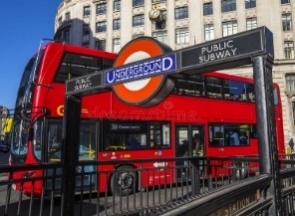
| B 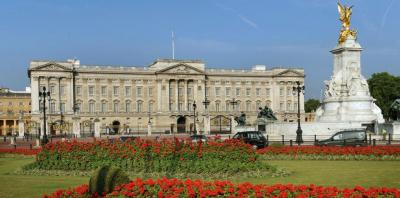
| C 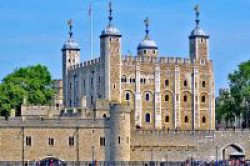
| D 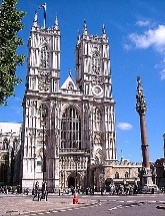
| E 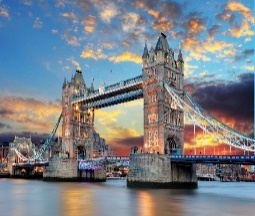
|
| F 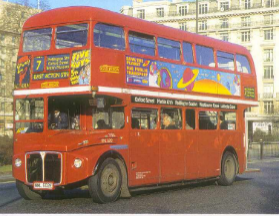
| G 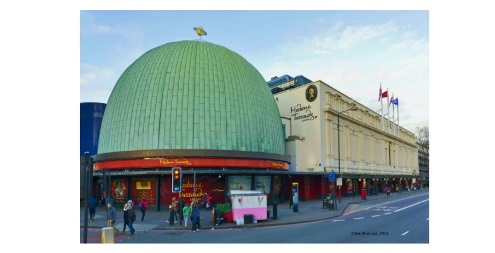
| H 
| I 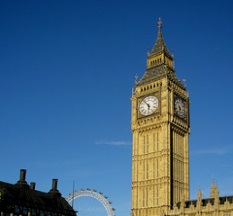
| J 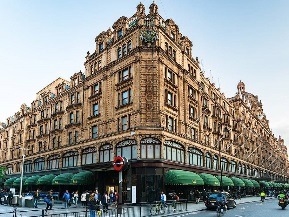
|
| K 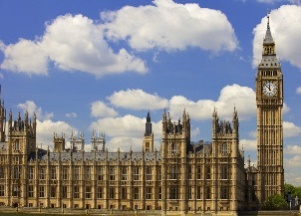
| L 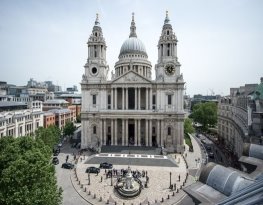
| M 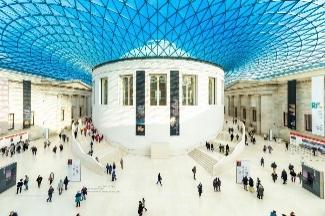
| N 
| O 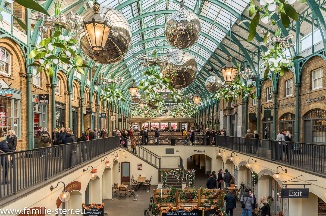
|
1. Trafalgar square
2. The Harrods store
3. Madame Tussaud’s Museum
4. Tower Bridge
5. Double-decker
6. Underground
7. Big Ben
8. The Tower of London
9. Buckingham Palace
10. Westminster Abbey
11. London's Yeoman Warders
12. Covent Garden
13. The Houses of Parliament
14. St Paul's Cathedral
15. The British Museum
Lesson 3
The USA
№1. Read and translate the text:
Did you know that the USA is the fourth largest country in the world, with a population of over 301 million people and covering nine million square kilometres? The United States of America is made up of 50 states and six regions. The country’s division into regions depends on geography, climate, economy, history and tradition of the various states. Of all the states the two that stand alone geographically are Alaska and Hawaii. They are the newest states, having both joined the US in 1959.
The original inhabitants of the US are the American Indians, the Alaskan Aleuts and the native Hawaiians. The population of these groups is small compared to that of the other US citizens who are immigrants from all over the world and include English, Irish, Polish, Asian and Mexican descendants to name a few. Furthermore, America has a large population of African Americans, as well as Hispanic Americans who are originally from Latin America. This is why the USA has been called a melting pot of cultures. The official language is English, and is referred to as ’American English’. The second most widely spoken language in the country is Spanish.
The East Coast States, New York being the most populated city, are marked for their forests, mountains, beaches and picturesque lakes. The Midwestern States are referred to as the ’heartland’ of the nation because they lie in the middle of the country. The Midwest has vast areas of flat and fertile land. Chicago, one of the world’s busiest cities, is located there. The Southern States, such as Tennessee and Florida are also fertile and have a moist, sub-tropical climate. Next are the Western Interior States, which include amazing natural scenery such as the Rocky Mountains, the Grand Canyon and the Arizona Desert. The Pacific Coast States like California and Hawaii have a mild climate and fertile valleys. Last but not least is Alaska, the largest state in the US but also the least populated.
№2. Answer the questions:
1. How many regions are the US divided into?
2. Why are the Midwest States called the ’heartland’?
3. Which is the largest state in the US?
4. Which is the most populated city in the US?
5. Who were the original inhabitants of the US?
6. Why has the US been called a melting pot?
№3. Read the text again and find the synonyms in the text.
1) huge, 2) landscape, 3) consists of, 4) natives, 5) incomers, 6) entered
№4. Short answers about the USA:
1. Give the names of:
a) the highest mountain;
b) the main rivers;
c) the largest city;
d) the important ports;
e) the largest state;
f) Great Lakes along the boundary of the USA and Canada.
2. What was the first name of New York?
3. When was the city renamed? Why?
4. How many boroughs does New York consist of?
5. Where do black people mainly live?
6. On what river is the capital of the USA situated?
7. Where is Hollywood situated?
8. When and where was the present constitution proclaimed?
9. What are the main political parties in the USA?
10. In which city and state is Disney World located?
№5. Study the material «Reported Speech»
Прямая речь – это речь, переданная дословно, без изменений. На письме выделяется кавычками. “I am a student” she says.
Косвенная речь – это передача содержания прямой речи в форме пересказа. She says that she is a student.
При переводе прямой речи в косвенную применяется согласование:
- местоимений: He says “I am a student”. – He says that he is a student.
- времён: He said “I am very tired”. – He said that he was very tired.
- указателей времени: He said “They will go to the theatre next week”. – He said that they would go to the theatre the following week.
Согласование времён – это зависимость времени глагола-сказуемого придаточного предложения от времени глагола-сказуемого главного предложения.
| Direct speech | Reported speech |
| Present Simple He said, "I am hungry!" | Past Simple He said that he was hungry. |
| Present Progressive Mother said, "I am cooking the dinner now“. | Past Progressive Mother said that she was cooking the dinner then. |
| Present Perfect She said, "I have worked hard today“. | Past Perfect She said that she had worked hard that day. |
| Present Perfect Progressive I said, "My friend has only been working here for 3 months“. | Past Perfect Progressive I said that my friend had only been working there for 3 months. |
Переход от прямой речи к косвенной происходит так:
Сообщение
Прямая речь: Не said, “I go there.”
Косвенная речь: Не said (that) he went there.
Как видно из примера, знаки прямой речи (запятая и кавычки) отсутствуют и действует закон согласования времен.
Вопрос
Вопрос без вопросительного слова. Здесь используется союз if или whether, примерно соответствующие в русском языке частицы ли:
Прямая речь: Не asked, “Do you go there?”
Косвенная речь: He asked if they went there.
Здесь соблюдается прямой порядок слов (подлежащее стоит перед сказуемым), а также закон согласования времен.
Вопрос с вопросительным словом. В этом случае роль соединительного элемента играет само вопросительное слово. Здесь тоже соблюдаются прямой порядок слов и закон согласования времен:
Прямая речь: Не asked, “When do you go there?”
Косвенная речь: He asked when they went there.
Просьба или приказ
Поскольку в повелительном наклонении употребляется инфинитив (неопределенная форма глагола), то никакого согласования времен здесь нет:
| Прямая речь: | Не said to them, “Go there.” |
| Косвенная речь: | He told them to go there. |
| В отрицательной форме: | |
| Прямая речь: | Не said to them, “Don’t go there.” |
| Косвенная речь: | He told them not to go there. |
Если время и место действия, указываемые в прямой речи, при обращении в косвенную речь изменились, то происходит замена наречий места и времени, а также указательных местоимений:
| Прямая речь | Косвенная речь |
| now | then |
| today | that day, at the time |
| tomorrow | the next day |
| the day after tomorrow | two days later, in two days’ time |
| yesterday | the day before, on the previous day |
| the day before yesterday | two days before |
| last night | (on) the previous night |
| ago | before |
| next year | the next year, the following year |
| last year | the previous year |
| here | there |
| this | that |
| these | those |
№6. Change the sentences by the model:
Model: He said, “Open the door!” — He asked me to open the door.
He said, “Don’t go there!” — He ordered us not to go there.
1. He asked, “Close the door!”
2. The children ordered, “Read to us!”
3. She said, “Don’t laugh at him!”
4. The teacher asked, “Please give me a pen.”
5. Mother reminded, “Don’t be late for college.”
№7. Change the sentences by the model:
Model: She said, “He is my friend.” — She said that he was her friend.
1. Tom remarked, “I didn’t expect him to be so young.”
2. Jane muttered, “I am sorry I am late”.
3. Jean said, “My Dad will be fifty years old next year.”
4. Mother answered, “The children are playing in the garden.”
5. Sam told Boris, “It is raining outside. Take an umbrella.”
№8. Change the sentences by the model:
Model: He asked, “When do you finish your work?” - He asked me when I finished my work.
She asked, “Is everything ready?” - She asked if everything was ready.
1. He inquired, “Do you want to speak to me?”
2. She wondered, “When will they arrive?”
3. Mother asked in surprise, “Have you already done your homework?”
4. George inquired, “Are you sure that you are doing the right thing?”
5. The man asked, “When were you last in the Crimea?”
№9. Translate the sentences:
Дэвид сказал, что его мама учитель.
Мы увидели, что дети играли в настольный теннис.
Она надеется, что я не буду работать по воскресеньям в следующем году.
Я не знала, что они сегодня заняты и не смогут мне помочь.
Я думал, что он болеет.
Lesson 4
The USA
№1. Read and translate the text:
Washington, D.C. is the capital of the United States. It is an unusual city. It is a city that has no state. It is a district – the District of Columbia or D.C. That is why we say Washington, D.C.
George Washington became the first president of the United States in 1790. At that time the new United States had no capital city. It was necessary to have a capital city that was not a part of a state. Washington picked a place for the capital near his home, Mount Vernon. The state of Maryland gave some land and Virginia gave some land. This made the district of Columbia. The name of the capital is after George Washington.
The city of Washington, D.C. has wide streets, parks, and beautiful buildings. These buildings tell the history of the United States. The most famous building is the White House. This is the home of the president. Another important building is the Capitol. This is where Congress meets to make the laws of the country. Washington, D.C. is very special in the spring. It is cherry blossom time. Japan sent more than 3,000 cherry trees to the United States in 1912. The trees have beautiful flowers in March or April. It is a very pretty time to see Washington, D.C.
Millions of people visit Washington, D.C. Tourism is an important business. The other business is government. Every year the president sees the leaders of many countries in Washington, D.C.
№2. Answer the questions:
Why the capital of the USA is called Washington, D.C.?
Can you name any famous building in this city?
What is an important business in Washington?
What does D.C. mean?
№3. Say whether these sentences are true or false:
Mount Vernon was George Washington’s home.
Virginia was not a state.
The Capitol is another name for the White House.
Congress meets in the White House.
Japan sent cherry trees to the United States
№4. Which state you can find all 3 cities in:
Tallahassee, Jacksonville, Tampa - …
Philadelphia, Pittsburgh, Harrisburg - …
Madison, Green Bay, Milwaukee - …
Buffalo, Albany, Rochester - …
Albuquerque, Silver City, Santa Fe - …
Tacoma, Seattle, Olympia - …
Sacramento, Los Angeles, San Diego - …
Atlanta, Augusta, Savannah - …
№5. Read the text and say True or False:
Boston, the capital of Massachusetts, known as the city's rich history and quality education. He is rightly called the cultural and historical center. Millions of tourists come to Boston every year to learn more about the American Revolution and visit the many national historic sites such as Faneuil Hall, Heritage trail and Quincy Market. Boston is historically famous for the Boston Tea Party. American Athens, people styled Boston, has more than 100 colleges and universities. The largest and the most prestigious university of America is situated in Boston. It’s Harvard. Best university is precisely in Boston, in connection with the city's reputation is inherent in the intellectual center!
1. Boston is the capital of the USA.
2. It is the cultural and historical center.
3. Boston is historically famous for the Boston Tea Party.
4. Boston has more than 300 colleges and universities.
5. The largest and the most prestigious university of America is Harvard.
№6. Match the tourist attraction with state where it is located:
| 1. Mount Rushmore | a. Wyoming, Montana and Idaho |
| 2. Yellowstone National Park | b. Arizona |
| 3. Denali National Park | c. New York |
| 4. Grand Canyon | d. South Dakota |
| 5. Niagara Falls | e. Alaska |
№7. Change to reported speech:
1) Mom told me, "Don't spend too much money on clothes". - Mom warned me …
2) I said to her, "Speak more slowly!" - I told her …
3) I said to the teacher, "Please don't give us any homework."
- I begged the teacher …
4) He told me, "Buy some food on your way back." - He reminded me …
5) My mother said, "Get out of bed at once"! - My mothered ordered me …
№8. Use the reported speech:
He came last night.” She said that he ……………
“My parents will arrive today.” He said that his parents ……………
“I’m having a party tonight.” My friend said that he ………………
“I will contact you tomorrow.” He said he ………………
“I was there three months ago.” She said she ………………
№9. Write the sentences in the reported speech:
Example 2: The party finished late. — He said (that) the party had finished late.
They lived in a camp when they were on holiday.
My brother got up early this morning.
Li was a famous sportsman.
The couple agreed to meet at six.
Yesterday, I saw Mary in the street.
Sammy arrived by train.
Nicky went home early yesterday.
Lesson 5
Customs of Russia
№1. Translate the definitions:
Holiday is an official day when you do not have to go to school or work.
Custom is a habit or tradition.
Tradition is a custom or way of behaving that has continued for a long time in a group of people or a society.
Festival is a special day or period when people celebrate something, especially a religious event.
№2. Read and translate the text:
Shrovetide is an ancient festival dating from pagan times. The Christian historians say that those were really "mad" days in the past. People wore funny masks and costumes, sometimes, men wore women's clothing and vice versa. It was a merry festival, when delicious food and a lot of wine was consumed.
Shrovetide or Maslenitsa is the holiday when Russians say “goodbye” to winter and welcome spring. It lasts for a week before Lent. People celebrate it at the end of February or at the beginning of March. At first it was a festival that celebrated the arrival of spring and the start of work on the land. It included a lot of feasts and rituals (burning a doll of straw symbolizing winter, lighting fires, leaving festival food on the ancestors' graves). The main food at Shrovetide were bliny. The fist fighting was one more great fun that helped to get warm or cold winter days.
Later, the Orthodox Church included Shrovetide among its festivals. In Orthodox calendar Shrovetide is called the Cheese Week, a week before Lent, when they don’t eat meat but milk, eggs and cheese are allowed. Holy Church sees the Cheese Week as a week of humility and penitence.
Nowadays it’s time of singing, dancing and fun. People dress up, invite their friends, their nearest and dearest to see each other. People go for sleigh rides, go sledging and play in the snow. People have snow fights, burn bonfires, have a tug-of-war in the snow and lots more. There’s a lot to eat, too – especially blinis (or pancakes). You can eat them with sour cream, fish, caviar or butter, sugar, honey.
№3. Read the text again and decide if the statement is true or false:
1. Before Christianity people celebrated Shrovetide.
2. People sometimes exchanged their clothes.
3. Work in the fields usually began after this holiday.
4. People liked fist fighting because they were brave and strong.
5. The main meal at Cheese Week was BLINY WITH MEAT
6. Shrovetide is an important Orthodox holiday
№4. Match the activities and the names of the days:
| Monday is called - встреча Tuesday is called - заигрыши Wednesday is called - лакомка Thursday is called - разгул, перелом Friday is called - тёщины вечерки Saturday is called - золовкины посиделки Sunday is called - прощённый день. | A Meeting Game Day Sweet Day Playing Thursday Mother-in-law’s Evening Daughter-in law’s Day Forgiving Sunday |
a) This day marks ‘broad Shrovetide’, People rode troikas and took part in fist fighting on that day.
b) On this day they dressed the Shrovetide straw doll.
c) It is the last day of Shrovetide and it was known as Sunday of forgiveness. On that day people ask forgiveness of one another for earlier hurts, burnt a Shrovetide straw doll and scattered the ashes for a profuse harvest.
d) On this day sisters-in-law gathered for a chat and young housewives invited all relatives to demonstrate their culinary skills.
e) On this day guys invited girlfriends to take a slide downhill so that they could choose a match.
f) After many games it’s time for a lot of eating. Tables are filled with different meal and, of course, with pancakes. Mothers-in-law invited their sons-in-law for a treat.
g) Now it is sons-in-law’s turn to treat their mothers-in-law to pancakes.
№5. Study the material “Ordinal numerals”:
Порядковые числительные — класс имён числительных, обозначающий порядок предметов при счёте. Порядковые числительные в английском языке отвечают на вопрос Which? «который?», «которая?». Образуются порядковые числительные в английском языке путем добавления суффикса «th» к соответствующему порядковому числительному. Исключение составляют такие порядковые числительные как: the first, the second, the third, они образуются не по правилам и их нужно запомнить. Перед всеми порядковыми числительными обязательно ставится определенный артикль the, так как английские порядковые числительные являются определением к конкретному существительному.
| 1 – first 2 – second 3 – third 4 – fourth 5 – fifth 6 – sixth 7 – seventh 8 – eighth 9 – ninth 10 - tenth | 11 – eleventh 12 – twelfth 13 – thirteenth 14 – fourteenth 15 – fifteenth 16 – sixteenth 17 – seventeenth 18 – eighteenth 19 – nineteenth 20 - twentieth | 21 – twenty-first 22 – twenty-second 30 – thirtieth 40 – fortieth 50 – fiftieth 60 – sixtieth 70 – seventieth 80 – eightieth 90 – ninetieth 100 – one hundredth |
№6. Write the dates in words and what events are on these days:
The Annunciation, Russia Day, Epiphany, Victory Day, Candlemas, Unity Day, Christmas, The Defender of the Fatherland Day.
07/01; 19/01; 15/02; 23/02; 07/04; 09/05; 12/06; 04/11
№7. Write the ordinal numerals of these things:
1) Saturday is the … day of the week.
2) February is the … month of the year.
3) P is the … letter of ABC.
4) Wednesday is the … day of the week.
5) The New Year is on the … of January.
6) June is the … month of the year.
7) My birthday is on the … of …
8) H is the … letter of ABC.
9) Today is the … of …
10) December is the … month of the year.
№8. Write who lives on which floor using ordinal numbers:
Example: Kelly lives on the seventh floor.
Floor 7 - Kate
Floor 6 - Ivan
Floor 5 - Diana
Floor 4 - Peter
Floor 3 - Sofia
Floor 2 - Oleg
Floor 1 – Anna
№9. Write out the odd number:
1. five, fifteen, fifth, fifty
2. seventy, seventeenth, seven, seventeen
3. three, thirteen, third, thirty
4. eight, eighteen, eightieth, eighty
5. two, twelve, second, twenty
6. ninth, nine, ninety, nineteen
7. four, fortieth, fourteen, forty
№10. Fill the table:
| Number | Cardinal | Ordinal |
| 3 |
|
|
| 17 |
|
|
| 21 |
|
|
| 42 |
|
|
| 85 |
|
|
| 164 |
|
|
| 639 |
|
|
Lesson 6
Traditions of Russia
№1. Read the text and fill the gaps using the words: celebrate, singing, chickens, bucket, hidden, wearing, white, bunny, Santa, Easter.
Christians 1) ____ the resurrection of Christ on Easter Sunday/ Many churches hold Easter 2) _____ services. Churches are decorated with 3) ____ lilies and are filled with people 4) _____ new Easter outfits. The choir and congregation join in. 5) ____ special hymns of joy. For many children the excitement of receiving an Easter 6) ____ filled with goodies and hunting for eggs 7) ____ by the Easter rabbit is topped only by the excitement of receiving gifts from 8) ____ at Christmas. Did you ever wonder why the Easter 9) ____ brings the eggs instead of the Easter chicken? After all, 10) ___ not rabbits lay eggs.
№2. Add these words to the Word Web. Before doing this make sure you know all the words.

 Activities Things we give
Activities Things we give
and receive
Traditions

 Celebrations
Celebrations
Special food Special occasions
and drinks
Wedding cards anniversary tricks birthday firework
Champagne cake parade picnic dancing flowers
№3. Match the holidays and their descriptions:
| New Year’s Eve is a night when … | … people honour women by giving them flowers and presents. |
| April 1st is a day when … | … people play tricks on friends. |
| February 23rd is a holiday when … | … pupils and students start the new academic year. |
| March 8th is a day when … | … people in our country honour workers. |
| Victory Day is a holiday when … | … people have parties and stay up until midnight to see the new year in. |
| September 1st is a day when … | … people have parades and ceremonies to honour those who died in the Great Patriotic War. |
| Easter is a religious holiday when … | …people honour members of the armed forces. |
| Labour Day is a holiday when… | … many people have gatherings eating dyed eggs, paskha and kulich. |
| Christmas is a religious holiday when… | … people have parties, light candles and give each other gifts. |
№4. Read the text and answer the questions:
Almost every nation and country have a reputation of some kind. First, let’s speak about Russian people. The main traits of their characters that differ them from other people are hospitality, their «open heart», «golden hands», and wise Russian fairy-tales reflect this wisdom. Our people are hardworking, patient, never loosing hope for better life. The Russians are talented people. Russia gave the world-famous names of Pushkin and Lermontov, Chaikovsky and Repin, thousands of names of world-famous poets, writers, composers, scientists. All of them are the pride of the nation because they sang the beauty of our nature and people.
Our country is famous for Russian traditional specific crafts and its skilled craftsmen. Painted boxes of Palekh, coloured shawls of Pavlov Posad, clay toys of Dymkovo, laces of Vologda are known all over the world. The names of Gzhel and Khokhloma are considered to be the symbols of Russia as well as matryoshkas and samovars. The history of Khokhloma goes back into the 17th century. Producing of tableware - dishes, spoons, mugs was begun at that time in the villages of Syomino and Khokhloma in the Nizhny Novgorod Province, on the banks of the great Russian river Volga. Many carpenters, painters have been working since then reviving traditions of old masters. The Khokhloma style is characterized by using plant elements in painting the tableware. The prevailing colours are black, yellow, golden, green and red. And nowadays this craft is sure to be saved, it will be developed and brought into the future by the new generation of painters.
Now we celebrate the forgotten holidays - Troitsa, Maslenitsa, the Easter. We again sing Russian folk songs and chastushki, dance Barinya and perform khorovods, ride in troikas. Traditional Russian cooking is world-famous for such dishes as okroshka, shi, pelmeni, kurnik, kvas. We begin to build and reconstruct churches. The example of it is the building of the Cathedral of Christ the Saver in Moscow. It is the symbol of reviving human feelings, national pride and patriotism.
What are the main traits in Russian people’s character?
What specific Russian crafts do you know?
What is Khokhloma style characterized by?
What is traditional Russian cooking?
№5. Study the material “Past Progressive”
1) Прошедшее длительное время обозначает действие, которое происходило в определённый момент в прошлом
2) Указатели времени: at that time yesterday – в тот момент вчера; at 5 o’clock – в 5 часов; when he came – когда он пришёл
3) Вспомогательные глаголы – was (ед. ч.), were (мн. ч.)
4) Положительное предложение:
ед.ч. V4
 was
was 
мн.ч. V4
 were
were 
V4 = Ving
5) Отрицательное предложение:
ед.ч. V4
 was not
was not 
мн.ч. V4
 were not
were not 
6) Общий вопрос:
ед.ч. V4
Was 
 ?
?
мн.ч. V4
Were 
 ?
?
7) Специальный вопрос:
ед.ч V4
Wh. was 
 ?
?
мн.ч. V4
Wh. were 
 ?
?
№6. Add –ing to the verbs and translate them.
read, write, take, sit, play, swim, jump, run, go, do, buy, help, eat, make, speak, sleep, talk, fly, lie, die, come, shop, live, sing, dance, work, have, cry, put, use, stop, drive, win.
№7. Decide whether to use 'was' or 'were'. Make up the sentences negative and interrogative:
Boris … learning English.
They … swimming in the lake.
Your father … repairing the car.
I … reading a magazine.
You … packing your bag.
My friends … watching the match on TV.
It … raining.
The dog … barking.
The children … brushing their teeth.
Anne and Maureen … singing a song.
№8. Put the verbs into the correct form in Past Progressive:
When I went out into the garden, the sun … (to shine).
I … (to eat) ice cream when you met me in the park yesterday.
When I came home, Tom … (to speak) over the phone.
Somebody got into the room when we … (to sleep).
He saw Jane when she … (to cross) the street.
He … (to wait) for Jenny when it started raining.
The woman … (to have) a bath when she felt bad.
We … (to watch TV) when the door bell rang.
She … (to read) when somebody knocked at the door.
They … (to talk) about him when he suddenly came in.
Lesson 7
What are their traditions
№1. Read and translate the text:
Great Britain
Some English customs and traditions are famous all over the world. Tea and talking about the weather, for example. England is a land rich with traditions ranging from wassailing to special holiday events and superstitions. In Great Britain there is no written constitution, only customs, traditions and precedents. Traditionally the Queen reigns but does not rule.
English people have traditions not only in political, but in social life. They like to spend their free time in pubs where they can have a glass of beer and talk about different things their friends. A typical feature of an English house is a fireplace, even when there is central heating in house. Many families have pets — a dog, a cat or a bird. Politeness is a characteristic feature of English people. They often say "Thank you", "Sorry", "Beg your pardon".
Australia
Many Australians come together on St Patrick's Day to celebrate Irish culture and remember St Patrick. Some organizations hold St Patrick's Day breakfasts and lunches where lucky draw prizes are given and Irish food and drinks are served. On St Patrick's Day parades people wear traditional Irish costumes or dress in green.
Ireland
Many families prepare their homes for Easter Sunday by doing "spring cleaning" to prepare the house for blessing by the local priest which is a religious ceremony that dates back hundreds of years.
Canada
Canadian culture reflects a heavy influence of British, American and Aboriginal culture and Editions. For example, according to Canadian Prairie etiquette, if a neighbour brings you a plate of food, you must return the plate dirty; washing it will bring bad luck.
New Zealand
Church weddings are the most traditional marriage celebrations in New Zealand. According to a custom, the groom should not see the bride before she joins him at the front of church on their wedding day. The Maori wedding ceremony is conducted by a tribal elder and the couple is blessed in the Maori language. Wedding rings made of carved bone are also popular amongst those wishing to include the ancient culture in their wedding.
№2. Are these statements true or false? Correct the false ones.
1. All English traditions are famous all over the world.
2. According to the British constitution the Queen reigns but does not rule.
3. English people like to spend their free time at home.
4. You can find fireplaces in English houses where there is no central heating.
5. British people are very polite.
6. Many Irish people come to Australia to celebrate St Patrick's Day.
7. Many Australian families do "spring cleaning" on Easter Day.
8. In New Zealand all the wedding ceremonies should be conducted in accordance with Maori customs.
9. Canadian culture reflects an influence of Australian traditions.
№3. Match the word-combinations:
decorate celebrate hang paint send pull sing invite wear watch light | costumes carols a Christmas tree crackers Christmas stockings lamps friends parades Christmas cards pictures |
№4. Read and translate about different kinds of parties:
tea party - an occasion when people meet in the afternoon to drink tea and eat a small amount of food
garden party - a formal party that happens outside in the afternoon, often in a large private garden
house-warming party (новоселье) - a party that you give when you move into a new house
birthday party - a celebration of the anniversary of the birth of the person who is being honored
office party - a party for all the people in a company, department, etc., often paid for by the company
welcome party (приветственная вечеринка) - is held for the purpose of welcoming a newcomer, such as a new club member, a new employee, or a family's new baby.
hen party (девичник) – a party for a woman who is going to get married soon, to which only her female friends are invited
stag party (мальчишник) - a party for a man who is going to get married, to which only his male friends are invited
pyjama party - a party at which those present wear pyjamas and typically stay overnight
fancy dress party (маскарад) - a party where many of the guests are dressed up in costumes
barbecue party – a party where meat or fish is prepared over an open fire
music party – a party where people enjoy listening to music
going-away party/farewell party (прощальная вечеринка) – a party in honor of someone who is moving away or departing on a long trip
holiday party – a party to show that the day is very important
picnic party – a party where everyone takes food to a nice place in the country
skating party– a party for those who like sport
going places party – when you go to the Zoo, a museum, a ball game
do-it-yourself party – a party where everyone does a craft project at the party
when I grow-up party – a party where everyone is dressed in adult clothes
party animal (любитель вечеринок) - someone who enjoys parties and party activities very much and goes to as many as possible
to be a party to smth. - to be involved in something
party piece - a short performance or an action done in public, especially one showing an unusual or humorous skill
party-pooper - someone who spoils other people's enjoyment by disapproving of or not taking part in a particular activity
№5. Use the phrases below to complete the sentences:
hen party, party animal, to be a party to (something), house-warming party, party piece, party-pooper, stag party.
«Have you heard? Claire’s getting married on the 29th August. She’s having her ………….. the weekend before.»
They had a big …………….. about a month after they moved to their new place.
He got so drunk at his ……….. that he was nearly late for his own wedding.
«Oh, listen to my husband! He’s telling his golfing joke again. He does it every time we go to a party. It’s his ………………»
Jane was always the life and soul of the party. She really knew how to enjoy herself. She had a reputation for being a ………………
«Some of the people in my office are mobbing one of the sales representatives. They encouraged me to join in but I refused. I won’t ………............. it.»
«I don’t know what John sees in his new girlfriend. At parties she doesn’t dance, she never smiles, and she complains if the music is loud. She’s a real …………..!»
№6. Fill in the table with the symbols of some British holidays:
| Holiday | Symbols |
| 1. Christmas |
|
| 2. Boxing Day |
|
| 3. Epiphany |
|
| 4. Burns Night |
|
| 5. St. Valentine`s Day |
|
| 6. St. Patrick`s Day |
|
| 7. Pancake Day |
|
| 8. Easter |
|
| 9. Halloween |
|
| 10. Guy Fawkes Night |
|
№7. Match the title with the text:
A – Christmas
B – Hallowe'en
C – Mother's Day
D – St. Valentine’s Day
E – New Year's Day
F – Easter
1. On this day people visit their mothers and give them flowers and small presents. Husbands and children help with the meals and washing up.
2. On this day people usually visit their friends. They try to be the first person to wish good luck to their friends in the new year. There is a lot of dancing and eating. At midnight everybody joins hands and sings a special song.
3. On this day people send cards to their friends, parents and relatives. People put trees in their rooms and decorate them with toys and coloured lights. On this day children get up early in the morning. They want to see a stocking full of small presents on their beds. A traditional dinner on this holiday is roast turkey, roast potatoes and pudding.
4. People send special cards to people they love. They shouldn't write their names on the cards. The person who gets the card must guess who sent it.
5. At this holiday schools close for two weeks. People give each other chocolate eggs. Sometimes parents hide eggs in the house or in the garden and children look for them.
6. On this day they say ghosts and witches come out. Children make lanterns out of pumpkins. Some people have parties and dress as witches and ghosts. It is celebrated on the 31st of October. Children walk from house to house and ask "Trick or treat?"
№8. Insert the prepositions:
A traditional dinner … this holiday is roast turkey.
If a neighbour brings you a plate … food, you must return the plate dirty.
The groom should not see the bride … she joins him on their wedding day.
People put trees and decorate them … toys and coloured lights.
Children make lanterns … … pumpkins.
Wedding rings made … carved bone.
Many families prepare their homes … Easter Sunday.
… midnight everybody joins hands and sings a special song.
Many Australians come together … St Patrick's Day to celebrate Irish culture.
The guests are dressed up … costumes.
№9. Write “at”, “in”, “on” or “from...to...”
I usually go to bed … night.
I eat lunch at home … Christmas Day.
I finish classes … 17:30.
John’s birthday in … May.
We usually go to the beach … summer.
He goes to the cinema … the evening.
I have classes … Monday … Friday.
I am lazy … the mornings.
I often meet my friends … the weekends.
I go to the library … Tuesday afternoon.
Lesson 8
Customs, Traditions, Superstitions
№1. Read and translate the text
Good Luck
Lucky to meet a black cat. Black Cats are featured on many good luck greetings cards and birthday cards in England. Lucky to touch wood. We touch; knock on wood, to make something come true. Lucky to find a clover plant with four leaves. White heather is lucky. A horseshoe over the door brings good luck. But the horseshoe needs to be the right way up. The luck runs out of the horseshoe if it is upside down. Catch falling leaves in Autumn and you will have good luck. Every leaf means a lucky month next year. Cut your hair when the moon is waxing and you will have good luck. Putting money in the pocket of new clothes brings good luck.
Bad Luck
Unlucky to walk underneath a ladder. Seven years bad luck to break a mirror. The superstition is supposed to have originated in ancient times, when mirrors were considered to be tools of the gods. Unlucky to see one magpie, lucky to see two, etc. Unlucky to spill salt. If you do, you must throw it over your shoulder to counteract the bad luck. Unlucky to open an umbrella in doors. The number thirteen is unlucky. Friday the thirteenth is a very unlucky day. Friday is considered to be an unlucky day because Jesus was crucified on a Friday. Unlucky to put new shoes on the table. Unlucky to pass someone on the stairs.
Food Superstitions
When finished eating a boiled egg, push the spoon through the bottom of the empty shell to let the devil out. In Yorkshire, housewives used to believe that bread would not rise if there was a corpse (dead body) in the vicinity, and to cut off both ends of the loaf would make the Devil fly over the house!
Table Superstitions
If you drop a table knife expect a male visitor, if you drop a fork a female visitor. Crossed cutlery on your plate and expect a quarrel. Leave a white tablecloth on a table overnight and expect a death.
Animal Superstitions
Animals feature a lot in our superstitions as they do in superstitions around the world. One ancient British superstition holds that if a child rides on a bear's back it will be protected from whooping-cough. (Bears used to roam Britain but now they are not seen on our shores). In some parts of the UK meeting two or three Ravens together is considered really bad. One very English superstition concerns the tame Ravens at the Tower of London. It is believed if they leave then the crown of England will be lost.
It is said to be bad luck if you see bats flying and hear their cries. In the middle ages it was believed that witches were closely associated with bats. If a Sparrow enters a house it is an omen of death to one of the people who live there. In some areas it is believed that to avoid bad luck, any Sparrow caught must be immediately killed otherwise the person who caught it will die. In some areas black Rabbits are thought to host the souls of human beings. White Rabbits are said to be really witches and some believe that saying 'White Rabbit' on the first day of each month brings luck. A common lucky charm is a Rabbit's foot, but not for the Rabbit. It is thought very unlucky to have the feathers of a Peacock within the home or handle anything made with them. This is possibly because of the eye shape present upon these feathers i.e. the Evil-Eye associated with wickedness.
Wedding Superstitions
Bride and groom must not meet on the day of the wedding except at the altar. The bride should never wear her complete wedding clothes before the day. For good luck the bride should wear “something borrowed, something blue, something old and something new”.
The husband should carry his new wife over the threshold of their home.
№2. Answer the questions:
1. What is lucky to say on the first day of the month?
2. Which way up must a horse-shoe be to bring good luck?
3. What object is lucky to catch in autumn?
4. What must you do if you spill salt?
5. Is Tuesday 13th considered to be unlucky?
6. What will happen if the ravens leave the Tower of London?
7. Why is it unlucky to have the feathers of a Peacock within home?
№3. These are the main British holidays. Match the words with their equivalents:
| 1) New Year`s Day | a) День святого покровителя Северной Ирландии св. Патрика |
| 2) Good Friday | b) Пасхальное воскресение |
| 3) Easter Sunday | c) Канун дня всех святых |
| 4) May Day | d) День первого мая |
| 5) Spring Bank Holiday | e) Великая пятница |
| 6) Summer Bank Holiday | f) День святого Валентина |
| 7) Christmas Day | g) День рождественских подарков |
| 8) Boxing Day | h) Ночь Гая Фокса |
| 9) Halloween | i) Весенний день отдыха |
| 10) Guy Fawkes` Night | j) Летний день отдыха |
| 11) St. Valentine`s Day | k) Рождество |
| 12) St. Patrick`s Day (in Northern Ireland) | l) Новый год |
№4. Find the correct ending of each sentence in right column.
| 1. Christmas is celebrated on the 25th of December and…
2. English children play jokes…
3. May is the month…
4. Easter Sunday children…
5. People in the UK go…
6. On that day sons and daughters… | a) … for traditional dancing around the Maypole. b) … symbolize the birthday of Christ. c) … or tricks on other people. d) … to Trafalgar Square to see the fireworks and the fir-tree. e) … get chocolate eggs and rabbits. f) … visit their mothers and bring them flowers and presents. |
№5. Fill in the gaps with the following words and word combinations.
| a. gifts | d. February | g. Thanksgiving Day | j. the eve |
| b. the USA | e. politeness | h. cranberry sauce | k. chimney sweeps |
| c. turkey | f. wool sack | i. domestic |
|
1. Halloween or … of All Saints’ Day is celebrated on October 31.
2. Though there are few … working today, a Sweeps Festival is celebrated in Rochester on the first weekend in May, in honour of this old profession.
3. St. Valentine’s Day is celebrated on … 14.
4. To present … on Christmas is a good tradition.
5. … is a characteristic feature of English people.
6. I know that many English people like … animals.
7. Thanksgiving Day is very popular in … .
8. The people can spend … with their families, as it is a four-day holiday.
9. As the … cooks, make the simple homemade … .
10. The Lord Chancellor presides over Parliament sitting on a … , which symbolizes the importance of wool in English history.
№6. Match the names of the parties and their descriptions.
a tea party a garden party a music party a birthday party a welcome party a going-away party a holiday party a barbecue party a picnic party a fancy dress party a going places party a do-it-yourself party a when I grow-up party a skating party a pyjama party | a gathering at which tea is drunk people enjoy listening to music someone is new to your class or town to show that the day is very important everyone takes food to a nice place in the country people come dressed as film or book characters you go to the Zoo, a museum, a ball game everyone does a craft project at the party everyone is dressed in adult clothes for those who like sport children show their beautiful pajamas for people who enjoy flowers (outside the house) we get presents we are sorry to say good-bye to somebody meat or fish is prepared over an open fire |
№7. Find the mistake. Write the right sentences:
I was born on July.
I usually get up in 8:00 in the morning.
I have classes from Monday in Friday.
I often go to the cinema in Wednesday.
I go to bed in night.
I was born at 2003 to Vancouver.
From 2001 on 2008, Jane lived on Canada.
My birthday is on August.
The train leaves in 4:30 in the afternoon.
I usually eat lunch on 2:00.




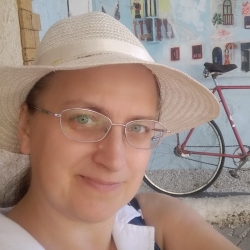


















 Activities Things we give
Activities Things we give 
 Celebrations
Celebrations was not
was not 

















